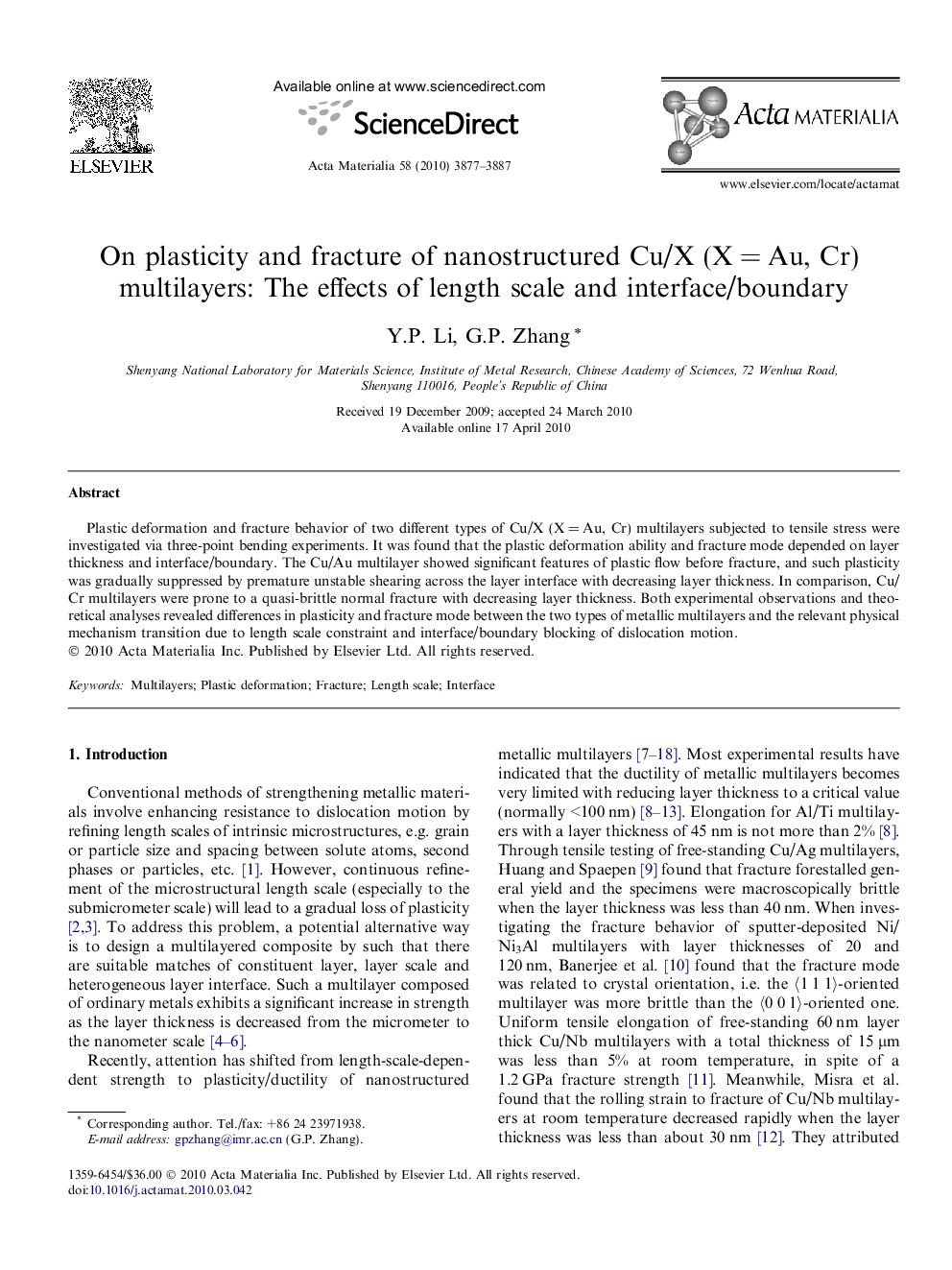| Article ID | Journal | Published Year | Pages | File Type |
|---|---|---|---|---|
| 1447792 | Acta Materialia | 2010 | 11 Pages |
Plastic deformation and fracture behavior of two different types of Cu/X (X = Au, Cr) multilayers subjected to tensile stress were investigated via three-point bending experiments. It was found that the plastic deformation ability and fracture mode depended on layer thickness and interface/boundary. The Cu/Au multilayer showed significant features of plastic flow before fracture, and such plasticity was gradually suppressed by premature unstable shearing across the layer interface with decreasing layer thickness. In comparison, Cu/Cr multilayers were prone to a quasi-brittle normal fracture with decreasing layer thickness. Both experimental observations and theoretical analyses revealed differences in plasticity and fracture mode between the two types of metallic multilayers and the relevant physical mechanism transition due to length scale constraint and interface/boundary blocking of dislocation motion.
